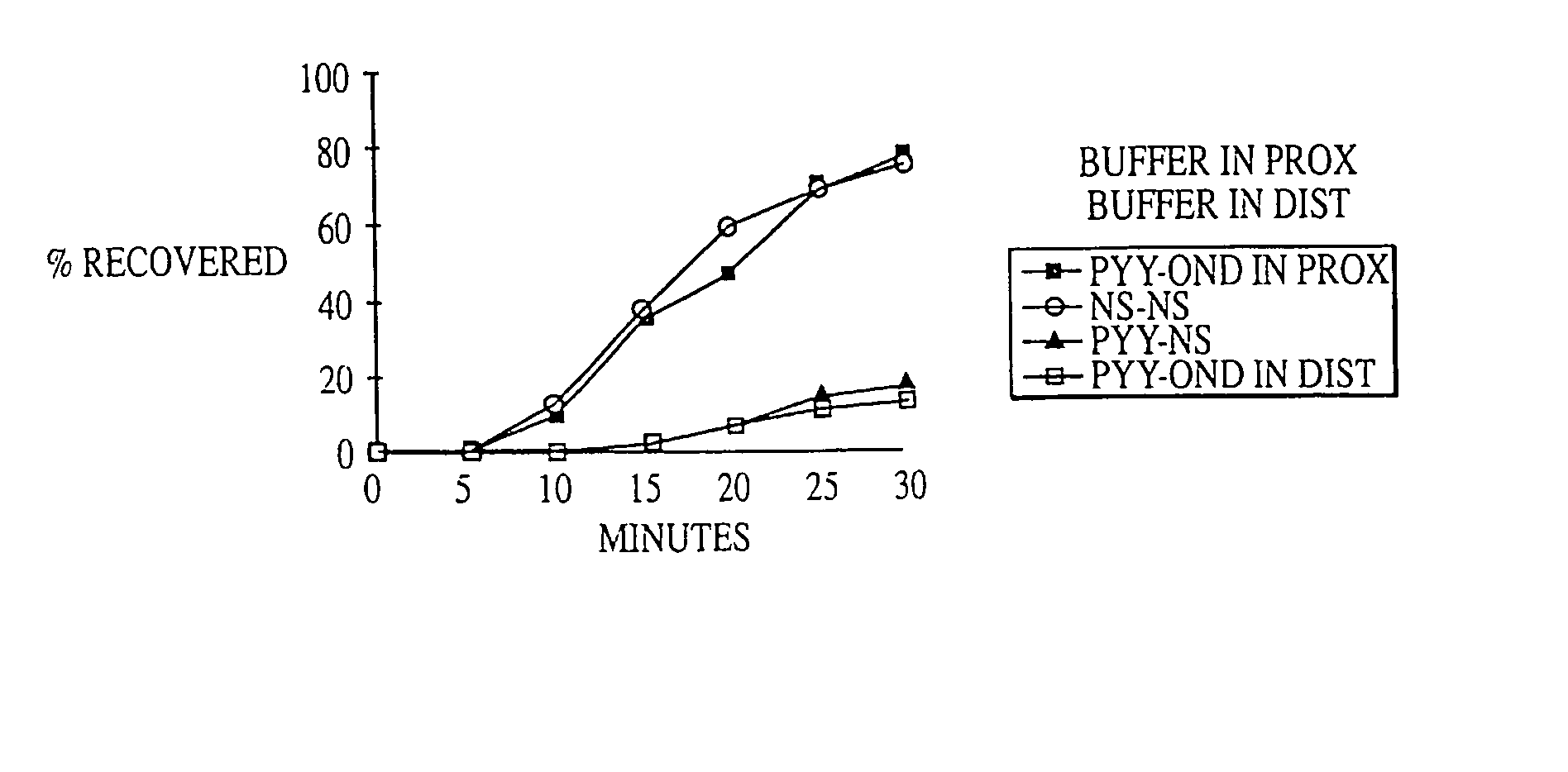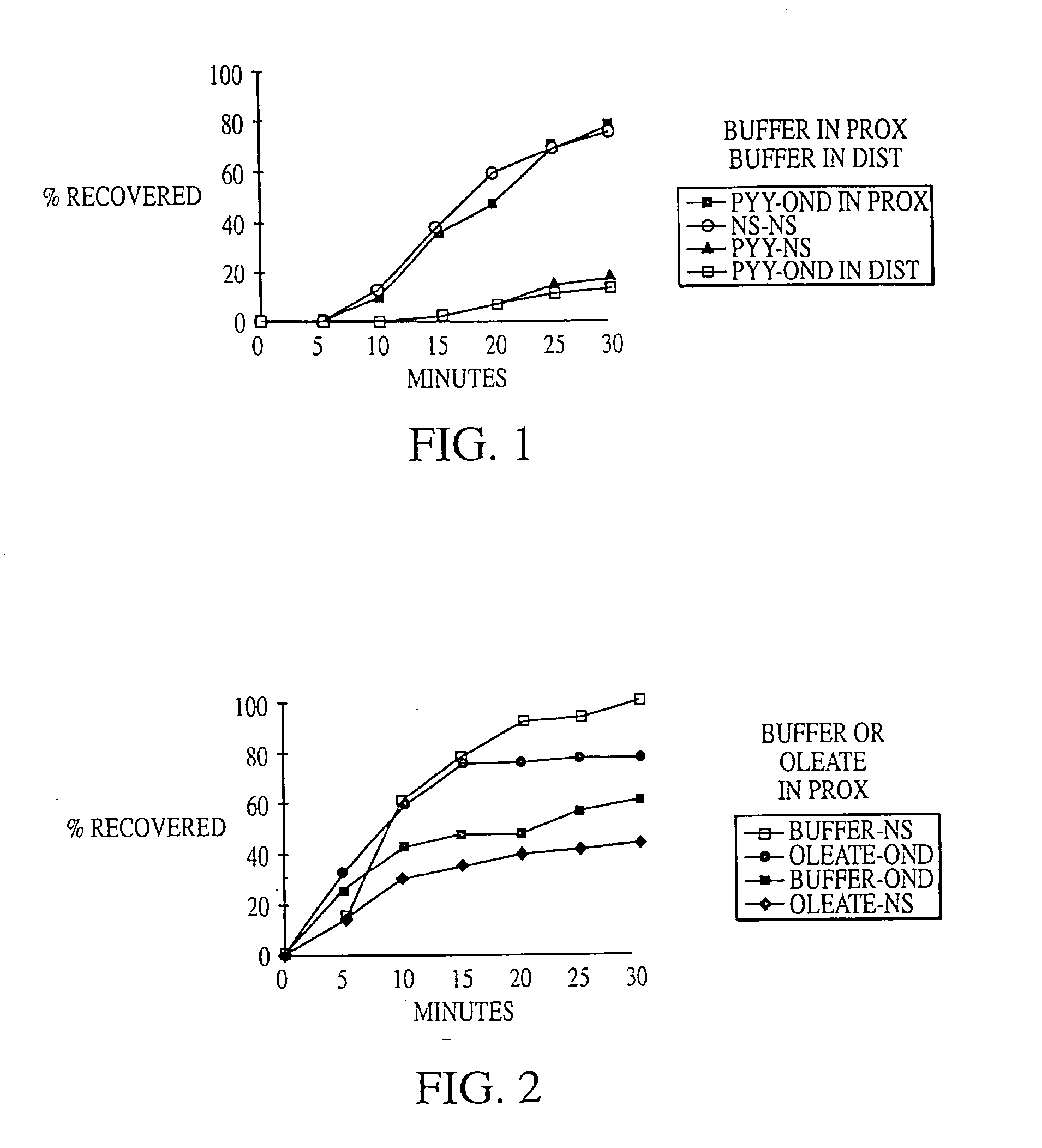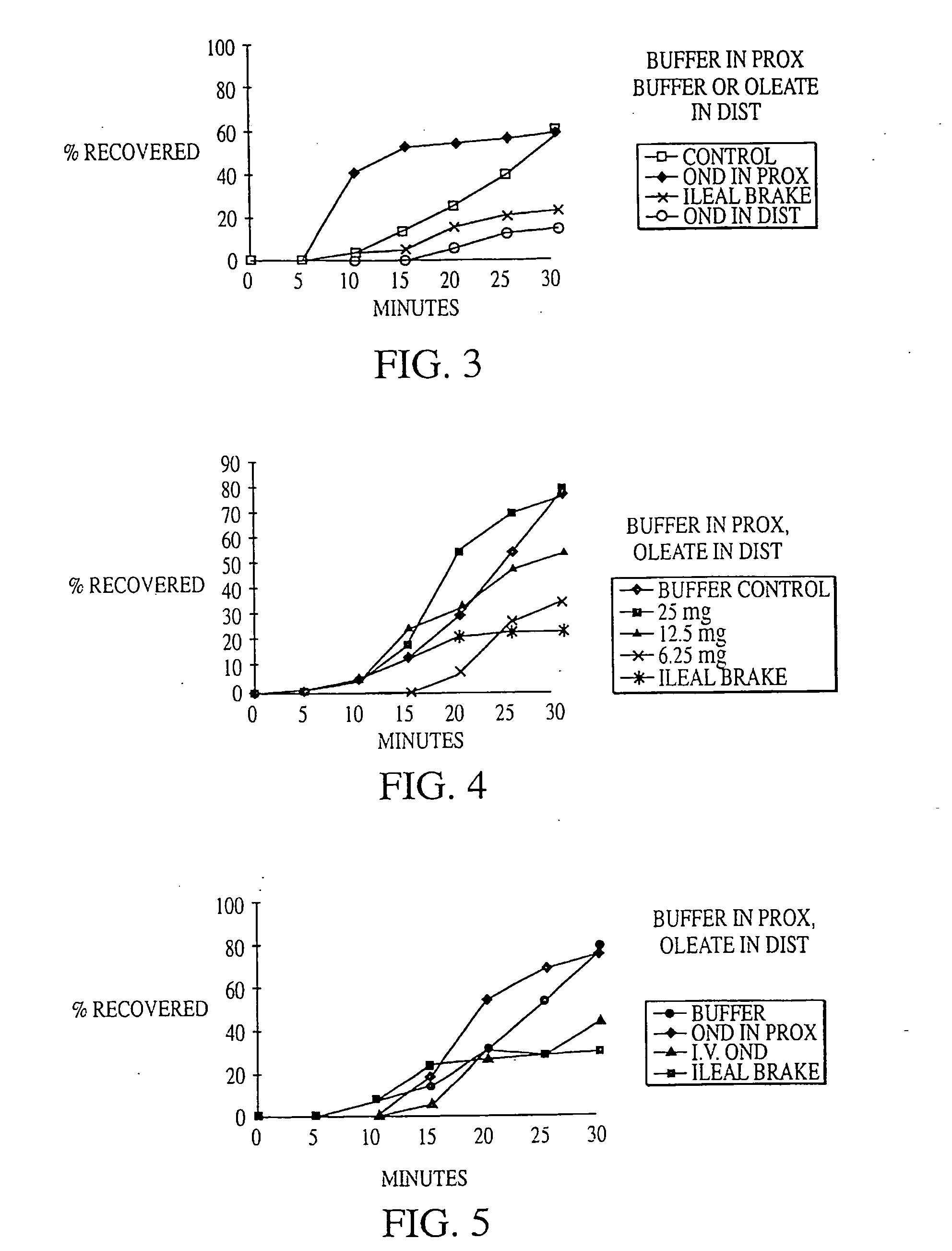Methods for manipulating upper gastrointestinal transit, blood flow, and satiety, and for treating visceral hyperalgesia
a technology of gastrointestinal transit and satiety, which is applied in the directions of powder delivery, peptide/protein ingredients, plant/algae/fungi/lichens ingredients, etc., can solve the problems of abnormally slow gastrointestinal transit time, solutes and nutrients can still be so excessive, and fecal loss of water, so as to enhance the bioavailability and therapeutic effect of drugs, and reduce the sensation of esophageal, gastric, colonic or r
- Summary
- Abstract
- Description
- Claims
- Application Information
AI Technical Summary
Benefits of technology
Problems solved by technology
Method used
Image
Examples
example i
Oleate and Oleic Acid Slow Upper Gut Transit and Reduce Diarrhea in Patients with Rapid Upper Gut Transit and Diarrhea
[0192] Rapid transit through the upper gut can result in diarrhea, maldigestion and absorption, and weight loss; and pharmacologic treatment with opiates or anticholinergics often is required. It was tested whether fatty acids could be used to slow upper gut transit and reduce diarrhea in patients with rapid transit and diarrhea.
[0193] In a preliminary study, five patients with persistent diarrhea for 3 to 22 months, (one each due to vagal denervation, ileal resection for Crohn's disease, and vagotomy and antrectomy, and two due to idiopathic causes) were studied. Each patient demonstrated rapid upper gut transit on routine lactulose breath hydrogen testing (or variations thereof measuring labelled carbon dioxide) (Cammack et al. Gut 23:957-961 [1982]). This test relies on the metabolism of certain carbohydrate materials (e.g. lactulose) by the microbial flora with...
example ii
Fat in Distal Gut Inhibits Intestinal Transit More Potently than Fat in Proximal Gut
[0199] In 4 dogs equipped with duodenal (10 cm from pylorus) and mid-gut (160 cm from pylorus) fistulas, intestinal transit was compared across an isolated 150 cm test segment (between fistulas) while 0, 15, 30 or 60 mM oleate was delivered into either the proximal or distal segment of the gut as a solution of mixed micelles in pH 7.0 phosphate buffer at 2 mL / min for 90 minutes. The segment of gut not receiving oleate was perfused with phosphate buffer, pH 7.0, at 2 mL / min. 60 minutes after the start of the perfusion, ˜20 μCi of 99mTc-DTPA (diethylenetriaminepentaacetic acid) was delivered as a bolus into the test segment. Intestinal transit was then measured by counting the radioactivity of 1 ml samples collected every 5 minutes from the diverted output of the mid-gut fistula.
[0200] Intestinal transit was calculated by determining the area under the curve (AUC) of the cumulative percent recovery o...
example iii
Case Studies Showing Successful Treatment of Diarrhea with Oleic Acid
[0202] Postgastrectomy Dumping Syndrome. The patient was a 57 year old female with a history of subtotal gastrectomy and gastrojejunostomy for peptic ulcer and gastric cancer. Symptoms on presentation of nausea, cramping pain, lightheadedness, bloating and explosive diarrhea occurring after every meal were consistent with severe dumping syndrome. These symptoms persisted despite aggressive medical therapy including the use of tincture of opium and anticholinergics. Her upper gut transit times were (min) 16 (0 g oleic acid), 99 (1.6 g oleic acid) and 108 (3.2 g oleic acid). After one pre-meal treatment with oleic acid (3.2 g mixed with 25 mL of Ensure), this patient reported immediate benefit. With continued treatment with oleic acid (3.2 g mixed with 25 mL of Ensure, gravy or other comestible emulsion three times a day, 30 minutes before breakfast, lunch and dinner), she had only rare episodes of dumping symptoms ...
PUM
| Property | Measurement | Unit |
|---|---|---|
| weight | aaaaa | aaaaa |
| orocecal transit time | aaaaa | aaaaa |
| time | aaaaa | aaaaa |
Abstract
Description
Claims
Application Information
 Login to View More
Login to View More - R&D
- Intellectual Property
- Life Sciences
- Materials
- Tech Scout
- Unparalleled Data Quality
- Higher Quality Content
- 60% Fewer Hallucinations
Browse by: Latest US Patents, China's latest patents, Technical Efficacy Thesaurus, Application Domain, Technology Topic, Popular Technical Reports.
© 2025 PatSnap. All rights reserved.Legal|Privacy policy|Modern Slavery Act Transparency Statement|Sitemap|About US| Contact US: help@patsnap.com



